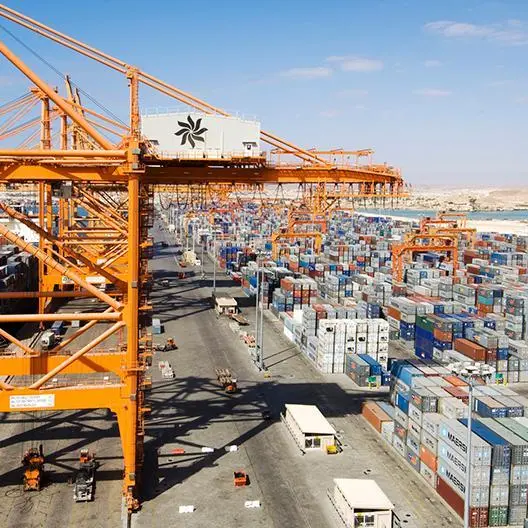PHOTO
Last month’s issue (Banker Middle East Issue 201) considered the rise of bitcoin and how the infamous cryptocurrency had revolutionised thinking in financial, economic and legal circles by providing a digital and transnational alternative to traditional fiat currency. An alternative that is not centrally owned nor controlled, and requires no intermediaries—in other words, currency as an open network.
At present, that revolution may be more theoretical than practical and the predominant engagement with bitcoin so far has been of a more speculative rather than utilitarian nature. While the jury may be out on the practical uses of the cryptocurrency, there is no doubt that blockchain, the underlying technology that powers bitcoin, has won the day and companies across the world are exploring how to benefit by implementing systems based on blockchain.
WHAT IS A BLOCKCHAIN?
Before proceeding further, it is useful to first consider how blockchain technology actually works. The technology itself is complex at a granular level but, for the purpose of most commercial discussions, it can be summarised as a decentralised ledger that keeps track of transactions by grouping them together in data structures called blocks.
Each new block contains a reference to the previous block that is produced by running the block (and all the transactions in the block) through a mathematical algorithm and producing a unique reference—a ‘hash’. This concept is what prompted the name blockchain (i.e. a chain of blocks) and it also accounts for one of the key security benefits. Any attempt to alter a previous block, or transaction in a block, would have a cascading effect on all later blocks as the hash references would no longer match. The computing power necessary to override the established consensus on a mature network (for example bitcoin) is widely considered mathematically impossible after just a few blocks. This process of consolidating the transactions and adding a new block to the blockchain is known as ‘mining’ in bitcoin parlance but the application is not limited to keeping track of the bitcoin ledgers and it can be used to track and monitor the exchange of information more broadly.
Every user on the blockchain has access, and maintains, the same copy of the distributed ledger through a process known as ‘reaching consensus’. There are different ways of reaching consensus but a reliable method is central to maintaining the blockchain ledger and the system as a whole. Blockchain can be public or permissioned with the permissioned model being adopted in most commercial projects as it allows the organisation to restrict who uses the system.
BLOCKCHAIN APPLICATION IN FINANCE
The potential applications for the decentralised and secure blockchain system are numerous and established IT companies as well as fintech start-ups around the world are already experimenting with wider applications.
Some of the most promising applications for the finance industry relate to:
• Enhanced security and fraud reduction—the distributed and decentralised nature of the network makes data manipulation extremely difficult as there is no central point to attack.
• Eliminating intermediaries— payment transactions can traditionally involve a number of intermediaries. Blockchain technology could eliminate the need for these if both transacting parties can verify the transaction without the need to refer to a third party. As a result, the speed of transacting can be greatly increased and costs lowered or eliminated.
• Eliminating operational errors— by limiting the need for human interference and data entry points, the security of banking operations and transactions driven by blockchain technology can be more secure and free of operational errors.
• Anti-money laundering (AML)—in a somewhat ironic turn of events given the money laundering concerns surrounding bitcoin, blockchain technology has the potential to become one of the most effective tools in the fight against money laundering and terrorism financing. In addition, it has the potential to significantly reduce the financial burden and efficiency of mandatory Know-Your-Customer (KYC) requirements. Given the relevance to the region, this advantage is explored further below.
BLOCKCHAIN IN THE FIGHT AGAINST MONEY LAUNDERING
Blockchain has the potential to help financial institutions coordinate AML efforts and change the way transactions are viewed by transforming them from isolated events to functions of a much bigger picture. By reporting transactions to a common ledger accessible to all participating financial institutions, a blockchain based triple accounting system could be developed, similar to that proposed by accountancy firms. Such a protocol could provide a complete picture of the source and destination of funds even in the context of multiple transfers across different banks. Taking the proposition even further, it could be combined with the work being done on blockchain based identity verification and the emergence of artificial intelligence (AI) and machine learning software to present a formidable obstacle against money laundering.
With multiple such projects underway in different jurisdictions and a significant increase in fintech investment it is important to look ahead. This diversity of interest and investment bodes well for the development of blockchain technology generally but it also runs the risk of replicating one of the financial industry’s greatest challenges—standardisation. If the patchwork of systems that exists today is simply replaced with a patchwork of blockchain enabled systems then the industry will fall short of achieving the full potential that blockchain offers. That is why collaborations will be paramount in order to achieve a level of interoperability that could truly revolutionise the industry.
LOOKING AHEAD
While blockchain technology offers many advantages and the potential applications are easy to see, they remain difficult to implement in the face of the regulatory, compliance and other legal requirements imposed on financial institutions. Around the world, regulators and industry experts are concerned that new technology is growing at a rate that far exceeds the risk testing and development of cybersecurity infrastructures required to support it. In light of the significant cybersecurity breaches that have been reported by large companies in the past year, this is a real concern.
At the Middle East Banking Forum on 22 November 2017, the HE Mubarak Rashed Al Mansoori, Governor of the Central Bank of the UAE expressed his support for fintech developments in the region but cautioned that the increasing rate of digitalisation also brings an inherent increase in cybersecurity risk. Al Mansoori announced that, to combat this risk, the Central Bank is in the process of preparing new regulations that will mandate a minimum set of standards for the systems and controls of licenced entities.
We expect that introducing mandatory standards is likely to have a positive effect on technological development overall as it will create some regulatory certainty around the legal requirements, as we have seen in other countries. Whilst the legal implications are significant, the advantage will be on the side of nimble execution and financial institutions within the Middle East are well placed to develop and test new technologies within the emerging technological ecosystem.
Initiatives such as the Dubai Blockchain Strategy offers government institutions and companies from a diverse range of industries an opportunity to participate in the evolving Smart Dubai initiatives. Participation by such a variety of companies will not only complement each other but it is also likely to create an ecosystem of blockchain functionality to truly test its capabilities.
Looking ahead, financial institutions will have to determine how to comply with existing laws and regulations in a way that accommodates both domestic requirements and technological ambitions in a changing and novel legal landscape involving not only blockchain but also AI, cloud computing and cryptocurrencies. It is a brave new world for banking.
Blockchain has the potential to help financial institutions coordinate AML efforts and change the way transactions are viewed by transforming them from isolated events to functions of a much bigger picture.
At present, that revolution may be more theoretical than practical and the predominant engagement with bitcoin so far has been of a more speculative rather than utilitarian nature. While the jury may be out on the practical uses of the cryptocurrency, there is no doubt that blockchain, the underlying technology that powers bitcoin, has won the day and companies across the world are exploring how to benefit by implementing systems based on blockchain.
WHAT IS A BLOCKCHAIN?
Before proceeding further, it is useful to first consider how blockchain technology actually works. The technology itself is complex at a granular level but, for the purpose of most commercial discussions, it can be summarised as a decentralised ledger that keeps track of transactions by grouping them together in data structures called blocks.
Each new block contains a reference to the previous block that is produced by running the block (and all the transactions in the block) through a mathematical algorithm and producing a unique reference—a ‘hash’. This concept is what prompted the name blockchain (i.e. a chain of blocks) and it also accounts for one of the key security benefits. Any attempt to alter a previous block, or transaction in a block, would have a cascading effect on all later blocks as the hash references would no longer match. The computing power necessary to override the established consensus on a mature network (for example bitcoin) is widely considered mathematically impossible after just a few blocks. This process of consolidating the transactions and adding a new block to the blockchain is known as ‘mining’ in bitcoin parlance but the application is not limited to keeping track of the bitcoin ledgers and it can be used to track and monitor the exchange of information more broadly.
Every user on the blockchain has access, and maintains, the same copy of the distributed ledger through a process known as ‘reaching consensus’. There are different ways of reaching consensus but a reliable method is central to maintaining the blockchain ledger and the system as a whole. Blockchain can be public or permissioned with the permissioned model being adopted in most commercial projects as it allows the organisation to restrict who uses the system.
BLOCKCHAIN APPLICATION IN FINANCE
The potential applications for the decentralised and secure blockchain system are numerous and established IT companies as well as fintech start-ups around the world are already experimenting with wider applications.
Some of the most promising applications for the finance industry relate to:
• Enhanced security and fraud reduction—the distributed and decentralised nature of the network makes data manipulation extremely difficult as there is no central point to attack.
• Eliminating intermediaries— payment transactions can traditionally involve a number of intermediaries. Blockchain technology could eliminate the need for these if both transacting parties can verify the transaction without the need to refer to a third party. As a result, the speed of transacting can be greatly increased and costs lowered or eliminated.
• Eliminating operational errors— by limiting the need for human interference and data entry points, the security of banking operations and transactions driven by blockchain technology can be more secure and free of operational errors.
• Anti-money laundering (AML)—in a somewhat ironic turn of events given the money laundering concerns surrounding bitcoin, blockchain technology has the potential to become one of the most effective tools in the fight against money laundering and terrorism financing. In addition, it has the potential to significantly reduce the financial burden and efficiency of mandatory Know-Your-Customer (KYC) requirements. Given the relevance to the region, this advantage is explored further below.
BLOCKCHAIN IN THE FIGHT AGAINST MONEY LAUNDERING
Blockchain has the potential to help financial institutions coordinate AML efforts and change the way transactions are viewed by transforming them from isolated events to functions of a much bigger picture. By reporting transactions to a common ledger accessible to all participating financial institutions, a blockchain based triple accounting system could be developed, similar to that proposed by accountancy firms. Such a protocol could provide a complete picture of the source and destination of funds even in the context of multiple transfers across different banks. Taking the proposition even further, it could be combined with the work being done on blockchain based identity verification and the emergence of artificial intelligence (AI) and machine learning software to present a formidable obstacle against money laundering.
With multiple such projects underway in different jurisdictions and a significant increase in fintech investment it is important to look ahead. This diversity of interest and investment bodes well for the development of blockchain technology generally but it also runs the risk of replicating one of the financial industry’s greatest challenges—standardisation. If the patchwork of systems that exists today is simply replaced with a patchwork of blockchain enabled systems then the industry will fall short of achieving the full potential that blockchain offers. That is why collaborations will be paramount in order to achieve a level of interoperability that could truly revolutionise the industry.
LOOKING AHEAD
While blockchain technology offers many advantages and the potential applications are easy to see, they remain difficult to implement in the face of the regulatory, compliance and other legal requirements imposed on financial institutions. Around the world, regulators and industry experts are concerned that new technology is growing at a rate that far exceeds the risk testing and development of cybersecurity infrastructures required to support it. In light of the significant cybersecurity breaches that have been reported by large companies in the past year, this is a real concern.
At the Middle East Banking Forum on 22 November 2017, the HE Mubarak Rashed Al Mansoori, Governor of the Central Bank of the UAE expressed his support for fintech developments in the region but cautioned that the increasing rate of digitalisation also brings an inherent increase in cybersecurity risk. Al Mansoori announced that, to combat this risk, the Central Bank is in the process of preparing new regulations that will mandate a minimum set of standards for the systems and controls of licenced entities.
We expect that introducing mandatory standards is likely to have a positive effect on technological development overall as it will create some regulatory certainty around the legal requirements, as we have seen in other countries. Whilst the legal implications are significant, the advantage will be on the side of nimble execution and financial institutions within the Middle East are well placed to develop and test new technologies within the emerging technological ecosystem.
Initiatives such as the Dubai Blockchain Strategy offers government institutions and companies from a diverse range of industries an opportunity to participate in the evolving Smart Dubai initiatives. Participation by such a variety of companies will not only complement each other but it is also likely to create an ecosystem of blockchain functionality to truly test its capabilities.
Looking ahead, financial institutions will have to determine how to comply with existing laws and regulations in a way that accommodates both domestic requirements and technological ambitions in a changing and novel legal landscape involving not only blockchain but also AI, cloud computing and cryptocurrencies. It is a brave new world for banking.
Blockchain has the potential to help financial institutions coordinate AML efforts and change the way transactions are viewed by transforming them from isolated events to functions of a much bigger picture.
© 2018 CPI Financial. All rights reserved. Provided by SyndiGate Media Inc. (Syndigate.info).












